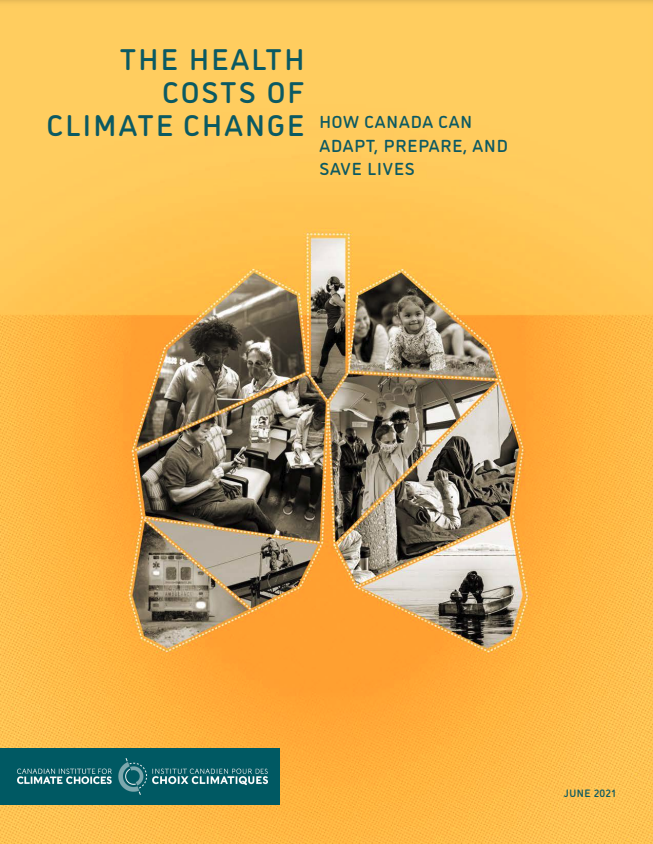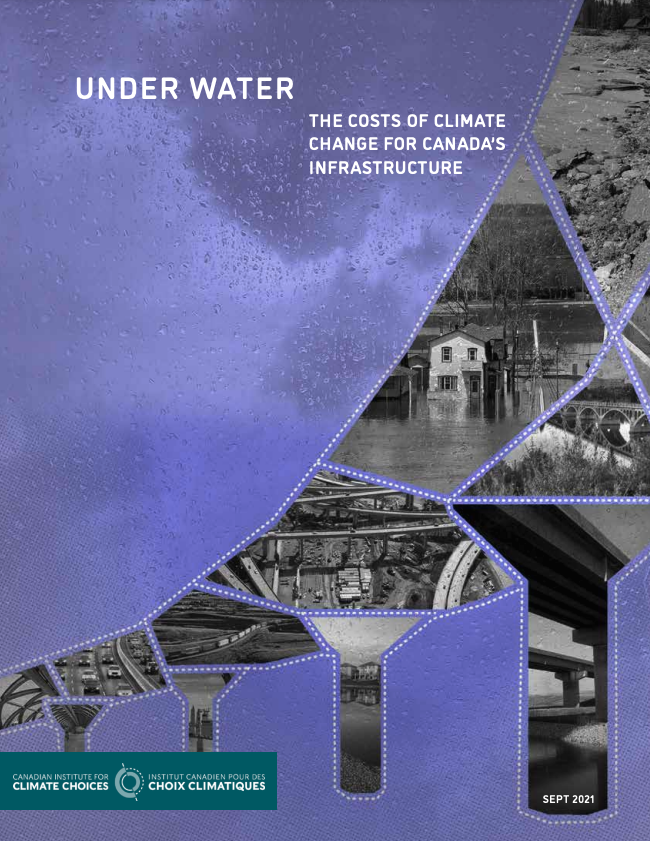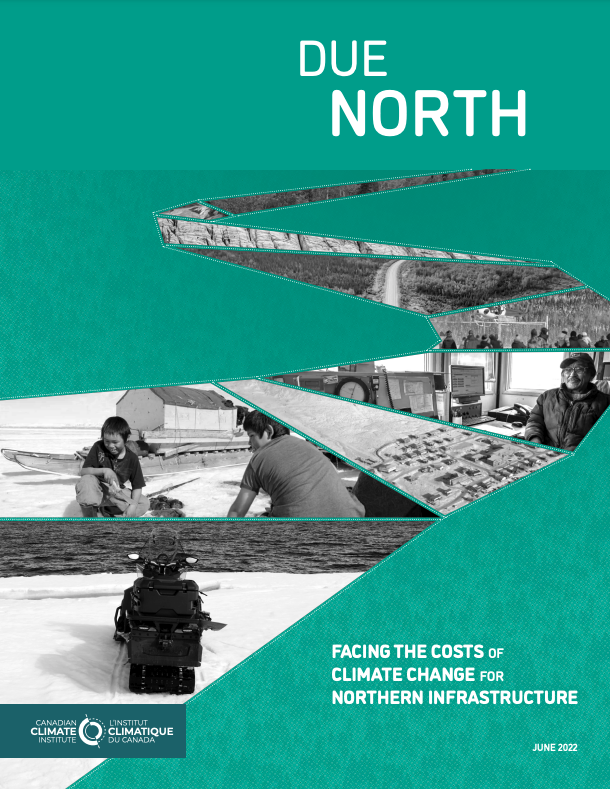
the costs of climate change: a series of five reports
Climate damages are costing Canada billions—acting now can limit future damage.
Climate change is already costing Canadian households billions of dollars—and these costs are just the tip of the iceberg.
Our Costs of Climate Change series documents how Canada is already suffering from increasingly devastating wildfires, floods, and extreme weather.
These damages will continue to worsen as the climate warms, putting people’s long-term prosperity, health, and well-being at risk.
Our research shows, however, that proactive adaptation can dramatically cut those costs, protecting households and securing a more affordable and prosperous future.
What we found
Through a series of five reports, the Canadian Climate Institute has sought to better understand the costs Canada faces from accelerating climate damages—and what we can do about them. Here’s what we found:
Click on the numbers to find out what they mean.

Since 2010, the costs of weather-related disasters and catastrophic events have amounted to about 5 to 6 per cent of Canada’s annual GDP growth, up from an average of 1 per cent in previous decades.
From the report Tip of the Iceberg: Navigating the Known and Unknown Costs of Climate Change
Towards the end of the century ground-level ozone could cause over a quarter of a million people per decade to be hospitalized or die prematurely, with an annual cost of about $250 billion.
From the report The Health Costs of Climate Change: How Canada Can Adapt, Prepare, and Save Lives
Flood damage to homes and buildings could increase from $60 million annually to as much as $300 million annually by mid-century and tenfold by end of century, with costs as high as $13.6 billion annually.
From the report Under Water: The Costs of Climate Change for Canada’s Infrastructure
Without adaptation, national costs from permafrost thaw damages to roads could cost up to $200 million per year in the next decade.
From the report Due North: Facing the Cost of Climate Change for Northern Infrastructure
Climate-induced damages slow Canada’s economic growth in 2025 by $25 billion annually, which is equal to 50 per cent of projected GDP growth in 2025.
From the report Damage Control: Reducing the Costs of Climate Impacts in Canada
Click on the numbers to find out what they mean.

Since 2010, the costs of weather-related disasters and catastrophic events have amounted to about 5 to 6 per cent of Canada’s annual GDP growth, up from an average of 1 per cent in previous decades.
From the report Tip of the Iceberg: Navigating the Known and Unknown Costs of Climate Change
Towards the end of the century ground-level ozone could cause over a quarter of a million people per decade to be hospitalized or die prematurely, with an annual cost of about $250 billion.
From the report The Health Costs of Climate Change: How Canada Can Adapt, Prepare, and Save Lives
Flood damage to homes and buildings could increase from $60 million annually to as much as $300 million annually by mid-century and tenfold by end of century, with costs as high as $13.6 billion annually.
From the report Under Water: The Costs of Climate Change for Canada’s Infrastructure
Without adaptation, national costs from permafrost thaw damages to roads could cost up to $200 million per year in the next decade.
From the report Due North: Facing the Cost of Climate Change for Northern Infrastructure
Climate-induced damages slow Canada’s economic growth in 2025 by $25 billion annually, which is equal to 50 per cent of projected GDP growth in 2025.
From the report Damage Control: Reducing the Costs of Climate Impacts in Canada
Click on the numbers to find out what they mean.

Installing shading technologies on 50 per cent of Canada’s manufacturing facilities by the 2080s would save an average of 15 million labour hours that would be lost to the health and productivity effects of high heat.
From the report The Health Costs of Climate Change: How Canada Can Adapt, Prepare, and Save Lives
The economic benefits of adaptation double when considering economy-wide gains, not just the savings to those who benefit directly.
From the report Damage Control: Reducing the Costs of Climate Impacts in Canada
Early adaptation investments in rebuilding foundations of homes and buildings in the Northwest Territories could reduce damages five-fold over the course of the century.
From the report Due North: Facing the Cost of Climate Change for Northern Infrastructure
Using climate-resilient materials when maintaining and replacing roads can reduce climate change-related damage costs by up to 98 per cent. This is equivalent to up to $5 billion in annual savings nationally over the next few decades and up to $13 billion annually by the end of the century.
From the report Under Water: The Costs of Climate Change for Canada’s infrastructure
Click on the numbers to find out what they mean.

Installing shading technologies on 50 per cent of Canada’s manufacturing facilities by the 2080s would save an average of 15 million labour hours that would be lost to the health and productivity effects of high heat.
From the report The Health Costs of Climate Change: How Canada Can Adapt, Prepare, and Save Lives
The economic benefits of adaptation double when considering economy-wide gains, not just the savings to those who benefit directly.
From the report Damage Control: Reducing the Costs of Climate Impacts in Canada
Early adaptation investments in rebuilding foundations of homes and buildings in the Northwest Territories could reduce damages five-fold over the course of the century.
From the report Due North: Facing the Cost of Climate Change for Northern Infrastructure
Using climate-resilient materials when maintaining and replacing roads can reduce climate change-related damage costs by up to 98 per cent. This is equivalent to up to $5 billion in annual savings nationally over the next few decades and up to $13 billion annually by the end of the century.
From the report Under Water: The Costs of Climate Change for Canada’s Infrastructure
Click on the numbers to find out what they mean.

Adaptation measures could reduce net climate-related costs for road repair and replacement by 77 to 84 per cent by mid-century in a high-emissions scenario, but if emissions are substantially reduced adaptation can eliminate 90 to 98 per cent of costs by end of century.
From the report Under Water: The Costs of Climate Change for Canada’s Infrastructure
Across the North, in a high-emissions scenario thermosyphons for buildings can save $33 million and reduce damage costs by 33 per cent but in a low-emissions scenario thermosyphons can save $127 million annually and reduce damage costs by 78 per cent.
From the report Due North: Facing the Cost of Climate Change for Northern Infrastructure
Taking proactive adaptation measures can cut climate costs in half–and when combined with global emissions reductions, climate-induced costs are cut by three-quarters.
From the report Damage Control: Reducing the Costs of Climate Impacts in Canada
Click on the numbers to find out what they mean.

Adaptation measures could reduce net climate-related costs for road repair and replacement by 77 to 84 per cent by mid-century in a high-emissions scenario, but if emissions are substantially reduced adaptation can eliminate 90 to 98 per cent of costs by end of century.
From the report Under Water: The Costs of Climate Change for Canada’s Infrastructure
Across the North, in a high-emissions scenario thermosyphons for buildings can save $33 million and reduce damage costs by 33 per cent but in a low-emissions scenario thermosyphons can save $127 million annually and reduce damage costs by 78 per cent.
From the report Due North: Facing the Cost of Climate Change for Northern Infrastructure
Taking proactive adaptation measures can cut climate costs in half–and when combined with global emissions reductions, climate-induced costs are cut by three-quarters.
From the report Damage Control: Reducing the Costs of Climate Impacts in Canada
About the series
In 2020, the Canadian Climate Institute set out to understand just how much climate change will cost Canada—and individual households—in the coming decades. Our series of five research reports explores the costs, impacts, and consequences of accelerating climate change, and what must be done to avoid the worst impacts and build a safer, more affordable, and more prosperous future.
Tip of the Iceberg: Navigating the Known and Unknown Costs of Climate Change explores the economic impacts of climate change in Canada, showing that damages will cut across the Canadian economy and, without adaptation, compound, with potentially devastating consequences. Read more.
The Health Costs of Climate Change: How Canada Can Adapt, Prepare, and Save Lives shows that climate change could cost our healthcare system billions of dollars and reduce economic activity by tens of billions of dollars over the coming decades. Read more.
Under Water: The Costs of Climate Change for Canada’s Infrastructure reveals that Canada’s infrastructure isn’t built for today’s —or tomorrow’s— climate, putting people’s health, safety, livelihoods, and the strength of the economy at risk. Read more.
Due North: Facing the Costs of Climate Change for Northern Infrastructure shows that Northern infrastructure, severely underfunded for decades, is at risk of serious damage from climate change, with devastating consequences for Northern communities. Read more.
Damage Control: Reducing the costs of climate impacts for Canada pulls together analysis from our previous reports, and new data and research, revealing how costly the overall impacts of climate change will be for our economy, society, and well-being, and how proactive adaptation can address these impacts, leading to a more stable, affordable, and prosperous future. Read more.





